| ~~~~~~~~~~~~~~~~~~~~~~~~~~~~~~~~~~~~~~~~~~~~~~~~
National Association of Rocketry
Educator's Newsletter
April 2017
~~~~~~~~~~~~~~~~~~~~~~~~~~~~~~~~~~~~~~~~~~~~~~~~ |
|

Teachers Who Facebook
How much are you connected to the social media? Is it for personal amusement, professional networking, or both? Do you use it to find or post teaching resources or share something you did in your class?
The NAR Education Committee wants to expand our rocketry educator media presence to engage more of the teacher community. Do you like "liking" and following Facebook? I'm looking for a few such teachers who will help me create and support a new NAR Educators Facebook page. It would complement the current NAR page at
https://www.facebook.com/groups/2255560886/.
We want to raise the visibility of all the exciting STEM rocketry events going on everywhere...Like the ones you're involve in!
If you're interested in helping follow this resource, please send a note to me at
[email protected]
. Thanks for your participation!
Aim high!
Vince Huegele
NAR Education Chairman
|
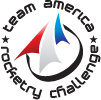 2017 Team America Rocketry Challenge (TARC)
2017 Team America Rocketry Challenge (TARC)
The TARC
http://www.rocketcontest.org/ is the world's largest rocket contest, sponsored by the Aerospace Industries Association (AIA) and the National Association of Rocketry in partnership with AAPT, DoD, NASA, and AIA member companies.
Structured to emulate the aerospace industry's engineering design process, TARC challenges teams to design and build a model rocket. This year the challenge brought a new difficulty to the competition: teams had to transition between two different body tube diameters. Rockets had to carry one raw egg to 775 feet and back safely in 41-43 seconds, returning it in a separate section.
In a few days, AIA will notify the top 100 teams
of the registered teams competing in TARC 201
7 of their status and invite them to attend the TARC Finals on May 13, 2017 at Great Meadow, The Plains, VA. Selection was based on the best qualification flight score reports submitted by teams by the deadline of April 3, 2017.
Congratulations to the Finalists, and to all the teams who achieved a successful qualification flight! Building a complex rocket making it fly correctly is not easy, and any team achieving this result successful achieved the educational goals of TARC. The challenge goal for TARC 2018 will be announced at the TARC 2017 Finals. Registration for TARC 2018 will open in September 2017.
NAR 4322 L3
TARC Manager
|
 NAR Scholarship Program, Robert L. Cannon Award, and Extracurricular Activity Grant Awards NAR Scholarship Program, Robert L. Cannon Award, and Extracurricular Activity Grant Awards
Did you know that if you are NAR member between the ages of 17 and 22 attending college or a vocational school that you may be eligible to receive a scholarship?
Are you a teacher or educator who uses model rocketry in the classroom? You are welcome to apply for a $500 grant to use in your program.
In 2001, the NAR's scholarship and Robert L. Cannon educational awards were inaugurated. Since 2010, we have awarded up to ten $500 Cannon grants and ten scholarships per year.
In 2015, a new program, the NAR Extracurricular Activity Grant (EAG) was initiated to provide up to ten $500 grants for after-school activities, such as rocket clubs, scout, Civil Air Patrol, 4-H, or NAR section programs involving model rocketry. TARC teams are not eligible for these awards.
The
deadline for applications is June 1st.
|
Interested in a Fellowship this Summer?
The IISME
Ignited Education Program places
eligible teachers of all subjects into high-performance work sites for the summer. It
is a full-time placement offering teachers the opportunity to experience first-hand what it takes to be successful in today's industry and research environments. For eight weeks, teachers are matched with a leading company, university, or research organization where they work closely with an experienced mentor to complete a real-world project. Fellows gain skills, share experiences, and develop tailored STEM curriculum to engage and inspire their students.
Teachers work for eight weeks and are paid up to $9,000 for their work: Fellows receive a
stipend of $7,000, plus up to $2,000 in Fellowship Grants.
|
Sacknoff Prize for Space History
To encourage research and writing in space history, Quest: The History of Spaceflight is offering $300 and a publishing opportunity to our upper-class undergraduate or graduate level students. If you are writing a paper on any aspect of spaceflight history, considering submitting it to [email protected]. Check out the details here--Space History. |
| INSPIRING OTHERS
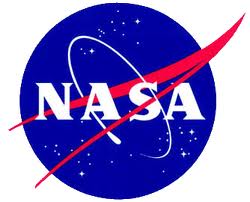 Cool Link: Rocket Science 101
Cool Link: Rocket Science 101
A
website where you can learn about the basic parts of a real launch vehicle, how they are configured, and how they work together to launch a NASA spacecraft. Great for students who want to build a virtual rocket.
|
|
National
Coalition for Aviation and Space Education
AIAA Foundation Educator Achievement Award
Do you know a deserving K-12 Classroom teacher that deserves to be recognized? Honor a K-12 classroom teacher for the work they do to support the American Institute of Aeronautics and Astronautics (AIAA) in its efforts to bring "real world" STEM (Science, Technology, Engineering, and Math) to the classroom in new and exciting ways. Nominate teachers who excite and engage students through STEM content and experiences. Through this recognition, AIAA celebrates the "best and brightest" educators for inspiring students. Each award recipient will be honored at the AIAA Aerospace Spotlight Awards Gala.
A nominee may be any K-12 teacher who supports AIAA in its efforts to bring "real world" STEM experiences to students. Past recipients may not apply for this award a second time. All recipients must be or become an AIAA Educator Associate member. Preference will be given to educators who demonstrate active participation and use of AIAA resources in their classroom.
Subscribe
to the NCASE
Monthly Newsletter and find out what
thousands of young people and educators are doing!
|
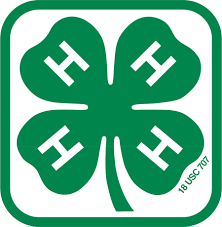 4-H
4-H
Uses Model Rocketry for Science, Technology, Engineering and Math
(STEM)
Rocketry is one of the most enjoyable projects 4-H has to offer. 4-H and the National Association of Rocketry have formed a
partnership to help students learn about model rocketry and STEM.
Delaware County and Pennsylvania State University
Delaware County 4-H, for example, provides
Rocketry School Enrichment and After School Enrichment Programs that help students meet Pennsylvania Academic Standards in science. 4-H project books are available for Delaware County, Pennsylvania classroom teachers, home school families, and after school clubs to use with students.
|
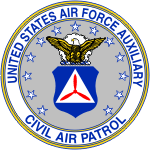 Civil Air Patrol (CAP)
Civil Air Patrol (CAP)
Promotes and Supports Aerospace Education
CAP educational programs (for its own members and the general public) help prepare American citizens to meet the challenges of a sophisticated aerospace society and understand its related issues. CAP and the national Association of rocketry have formed a partnership to help students learn about model rocketry and STEM.
Muñoz Air National Guard Base Cadet Squadron, Puerto Rico
Last year was the first in an annual program for the Muñoz Air National Guard Base Cadet Squadron. They held a two-part Model Rocketry School in Trujillo Alto, with written and hands-on phases conducted separately for the 29 participating cadets.
Online instruction and exams were followed by the hands-on designing and building of Redstone, Titan, and Saturn stages rockets, culminating in launching.
Before the school began, Lt. Col. Janice Borrero, external aerospace education officer for Puerto Rico Wing Group VI, prepared, designed and moderated online sessions in which the cadets read about rocketry, watched instructional videos and took the exams for the three stages.
For the subsequent hands-on phase, with the help of the unit's senior and cadet staff Lt. Col. Juan Toro - Group VI officer for internal aerospace education and for cadet programs - taught the cadets how to build the Fizzy Flyer rocket, the Goddard Rocket, and two single-stage model rockets (air-powered and engine-powered).
The next day the participants moved to the launch area. After receiving safety instruction and a review of the National Association of Rocketry Safety Code, cadets watched their rockets lift off.
Once the launches were conducted, the squadron's commander, Lt. Col. Ismael Rodríguez, certified all 29 cadets as having completed the program and awarded them with the Model Rocketry badge and patch.
Check it out!
National Standards-based Products
CAP offers national standards-based educational products, including a secondary textbook, Aerospace: The Journey of Flight, and the middle-school-level Aerospace Dimensions. Aerospace Education Members can get classroom materials and lesson plans from CAP... http://www.capmembers.com/aerospace_education/ |
|
Estes
It's spring...the prime time for model rocketry at schools
! Estes Educator works with many educators daily, getting lots of calls and emails from teachers and youth group leaders who have never built and launched a model rocket but who want to do that with their students. Can you guess the two questions first-time rocketry teachers ask the most? They are "How do I get started
teaching model rocketry?" and "What materials do I need to teach model rocketry?" These questions can be answered in
13 steps. And don't forget to check out their new
downloadable iPhone app!
Help NASA find new disks, homes of extrasolar planets, by classifying images from NASA's Wide-field Infrared Survey Explorer telescope and other observatories. In this citizen science project, you'll view animated images of disk candidates and classify them, distinguishing good candidates from galaxies, asteroids and image artifacts.
|
Wallops Rocket Academy for Teachers and Students (WRATS)

I
n June of this year, the
WRATS teacher work shop
will be held for the 6th time at Wallops Flight Facility. Teachers from near and far will attend the week long educational experience.
WRATS combines hands-on activities such as building model rockets, parachutes and an electronic payload with theory on rocket propulsion, flight dynamics, and trajectory simulations.
Each teacher builds a model rocket and a payload and designs a recovery system during the week. Flight data is recorded on-board and analyzed post flight. The payload incorporates an Arduino Micro and three sensors; an accelerometer, a pressure transducer and a thermistor. All payload recorded data and analysis should show that the rockets reached altitudes of between 400 - 600 feet.
Phil Eberspeaker/Chief Sounding Rocket Program Office will be the main presenter and provide the teachers with interactive demonstrations as well as theory of rocket flight. Educators will learn about various types of rocket propulsion, forces of flight, rocket stability and recovery system shock absorption.
The WRATS teachers will attend the early morning launch of RockOn! and view the payload de-integration and experiment return.
|
RocketSTEM: Inspiring the Next Generation of Explorers 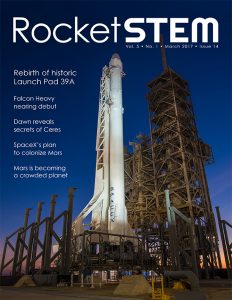
RocketSTEM Media Foundation is a private, not-for-profit organization established for the purpose of fostering science, technology, engineering and mathematics (STEM) education through the promotion of space exploration.
RocketSTEM Media Foundation was established in 2012. Based out of Pensacola, Florida, the organization has volunteers located throughout the United States, England and several other countries.
RocketSTEM's goals are to:
- Inspire the next generation of scientists, engineers and astronauts.
- Keep educators informed on space developments and help them better work STEM lessons into their classrooms.
- Raise awareness of the benefits of space exploration.
- Encourage international cooperation in space exploration.
Their first project is the publication of a RocketSTEM magazine with content geared towards teachers, students and parents as well. The publication blends space history - past, present and future - with interviews, career paths, astronomy lessons, aerospace and astronomy news, museum features, NASA technology spinoffs, and educational resources; along with explanations of the mathematics and physics of all things to do with aerospace and space travel.
As well as being free to read online, or to
download as a PDF
, we also hope to eventually make the magazine available as a multimedia enhanced app for tablets and smartphones.
While focused on development of the magazine at the present time, future plans include the creation of a set of lesson plans to be used by teachers at each grade level. RocketSTEM also has plans to endow a scholarship fund for college students pursuing aerospace studies, and for younger students wishing to attend Space Camp in Alabama or the National Flight Academy in Florida.
|
|
White Sands Missle Range: Annual Calibration Ensures Test Center's Accuracy
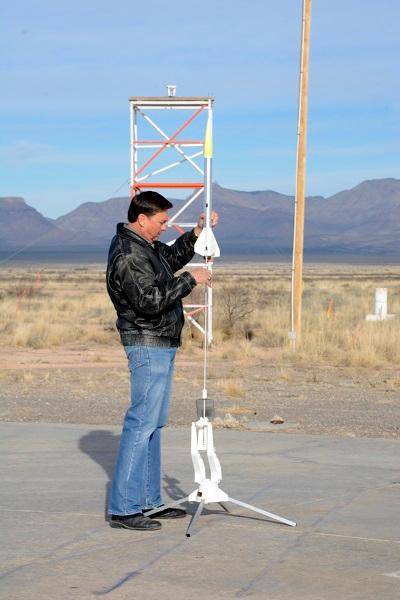 by Adriana Salas de Santiago, Missile Ranger Staff Writer by Adriana Salas de Santiago, Missile Ranger Staff Writer
Before kicking off another busy year for the White Sands Missile Range Test Center, the organization took advantage of its slow period to test their data equipment's accuracy. The team tested their optics, telemetry, radar, GPS and real-time display equipment Jan. 10 to 13.
"We take advantage of this down time to improve operational readiness," said Director of Range Operations Gilbert Harding.
Lupita Soliz, WSMR program manager, said the week of testing allows them to review all of their tracking data to ensure they don't have any "deltas" or difference in results. She said if there is a "delta" during the week of calibration they work to remove those "deltas" to be able to give the customer the most precise data available.
"The instruments have to work together to give data," said Jason Shankle, WSMR electronics engineer. "We advertise that we can reach a certain level of accuracy so we need to test that level of accuracy regularly."
On Jan. 10 and 11 the team tested their equipment on T-38s coming out of Holloman Air Force Base. The Jan. 12 and 13 mission was the first of its kind, where model rockets were used to test their fixed, high speed and surveillance cameras and tracking technology. The reason the rocket testing was added to the calibration is because the center wanted to test their ability of tracking a new Extended Area Protection and Survivability missile that travels a lot faster than a standard missile.
"It gives us practice and helps us develop techniques to track it," Shankle said.
He said because the model rockets are so inexpensive, $80 for the rocket and $40 for the motor, several rockets can be tested throughout the day. Eight rockets were to be tested on the 12th and seven rockets were to be tested on the 13th. Only two rockets were tested on the 12th due to issues with the launchers, but the issue was corrected and all seven rockets where launched on the 13th within 10 minute intervals.
"What they're doing is a no-cost approximation," Harding said. "We have been challenged to track small, fast rockets off the launch pad and effectively track them as soon as they launch. It helps them fine-tune their processes and set-up before they get into EAPS tests."
The testing team is made up of over 200 employees who work on everything from tracking missiles and aircrafts to ensuring the customer receives the highest quality of footage and photos of the missile or aircraft. "It is a big coordination effort with a lot of people on the field," Soliz said.
The testing also provided an opportunity to introduce newly hired employees, who have taken over for recently retired employees, to the testing field. Soliz said the newer employees were able to test their aircraft and missile tracking skills during the mock rocket testing.
The calibration also allows the center to test new evolutionary software upgrades that are usually developed in-house, Shankle said. "It gives everyone an opportunity to try new things they've been working on," Soliz said.
WSMR Navy also benefited from the testing as they were able to test their Precision Acquisition System by tracking the aircrafts and missiles and comparing the results with the Test Center. Soliz said the week of calibration would not have been possible without the assistance of TRAX International.
Harding said these types of calibration tests are not only conducted at the beginning of the year but are done as often as possible throughout the year to ensure the center's accuracy. According to Chief of Range Scheduling Mike Parsons, in 2016 there were 256 hot tests conducted and 283 tests with lasers for a grand total of 539 tests.
|
| Rocketry School Supplies Provided by Donors
As teachers, you know your students' needs best.
Donorschoose.org is available to provide an avenue for public school teachers to submit project requests for the specific materials their students need to learn. As their name implies, donors choose which projects to support. Once a project is funded, they deliver the materials directly to the school.
In return, teachers submit photos of the project in use and thank-you notes from students, which are then sent to the project's donors.
|
 NASA Makes Finding Teaching Materials Easy
NASA Makes Finding Teaching Materials Easy
NASA's
Education Materials Finder will help teachers locate resources that can be used in the classroom. Users may search by keywords, grade level, product type and subject. With hundreds of publications and Web sites indexed, the finder is the best way to locate NASA educational resources.
NASA's Adventures in Rocket Science Educator's Guide
This guide contains 25 activities designed for 4-H Clubs, Boys and Girls Clubs, Boy Scouts, Girl Scouts, after-school programs, and other informal education venues. Participants learn about the history and principles of rocketry and NASA's newest rockets -- Ares I and Ares V. While doing these hands-on activities, participants also learn about Hero Engines, parachutes and surface area, altitude tracking, and Newton's Laws Of Motion. Learners can also build four types of rockets and two types of egg drops. Take a look at the
Adventures in Rocket Science Guide!
NASA's Marshall Space Flight Center Education Page
NASA and the Marshall Space Flight Center strive to help maintain a strong American education system. They pursue this goal by nurturing students' interest in mathematics and science from elementary school through their college years, and by encouraging young people to consider careers in engineering and the aerospace industry. Browse the
Marshall Space Flight Center Education Page!
|
 National Association of Rocketry (NAR) offers Teachers and Youth Group Leaders Resources
National Association of Rocketry (NAR) offers Teachers and Youth Group Leaders Resources
The NAR offers Free Resource downloads produced by members who have helped teachers and youth group leaders like yourself all over the United States. Check these out and see if any match what you had in mind for your course! |
 Civil Air Patrol Civil Air Patrol
Aerospace Library
Aerospace/STEM Education Products
|
|
| |
| Space History April 2, 1915: President Woodrow Wilson appointed the first 12 members of the National Advisory Committee for Aeronautics (NACA). Twenty one days later, on April 23, the Secretary of War called the first meeting in his office. Brig. Gen. George P. Scriven, Chief Signal Officer, was elected temporary chairman, and Dr. Charles D. Walcott, secretary of the Smithsonian Institution, was elected first chairman of the NACA Executive Committee.
April 4, 1930: David Lasser, G. Edward Pendray, Fletcher Pratt and nine others founded The American Interplanetary Society, later the American Rocket Society (ARS), in New York City to promote interest in and work toward interplanetary expeditions and travel.  April 1, 1945: The U.S. Army fired the first of 17 Jet Propulsion Laboratory Private F rockets at Hueco Range at Fort Bliss, Texas as part of its historic Ordnance/CIT ballistic rocket program. April 1, 1945: The U.S. Army fired the first of 17 Jet Propulsion Laboratory Private F rockets at Hueco Range at Fort Bliss, Texas as part of its historic Ordnance/CIT ballistic rocket program.
April 4, 1960: Frank D. Drake initiated Project Ozma using the 85-foot Howard E. Tatel Radio Telescope at the National Radio Astronomy Observatory at Green Bank, W. Va. It was the first systematic attempt to detect artificial radio signal patterns from nearby stars. After 150 hours of listening, the project returned no evidence. However, Project Ozma was the precursor for many more, increasingly sophisticated searches which continue today.
April 6, 1965: The United States launched Intelsat I, the first commercial communications satellite, into geostationary orbit. Also called "Early Bird," the satellite provided the first scheduled transoceanic television service and was operational for 3.5 years. April 11-17, 1970: NASA launched Apollo 13 via a Saturn-V rocket. About 56 hours into the flight, an oxygen tank in the Apollo service module exploded and damaged several of the systems, including life support. People throughout the world watched, waited and hoped as NASA personnel on the ground and the Apollo crew worked together to find a way safely home. Astronauts Jim Lovell, Fred Haise and Jack Swigert used the lunar module as a lifeboat before returning to the control module for reentry. After a dramatic period of innovative recalculation at Mission Control Center at NASA's Kennedy Space Center in Houston, Texas, the crew returned safely six days later.
April 26, 1980: The U.S. Department of Defense launched the NavStar 6 navigation satellite via Atlas F rocket from Vandenberg Air Force Base in California. The NavStar Global Positioning System (GPS) is a radio-positioning system of satellites that provides navigation and timing information to military and civilian users across the globe.
April 29, 1985: NASA launched the space shuttle Challenger (STS-51B) from Kennedy Space Center, Fla. It was the first operational flight for the Spacelab orbital laboratory series developed by the European Space Agency (ESA). The orbiter made its first crosswind landing at Edwards Air Force Base in California at the end of this mission.
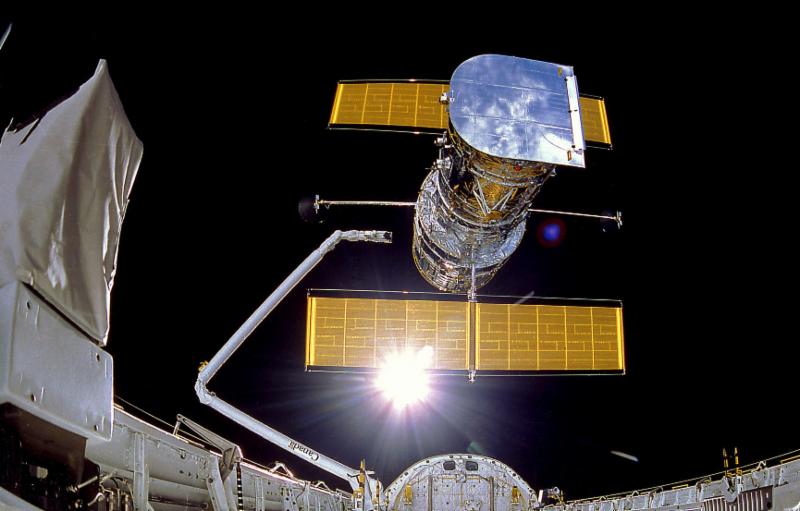 April 24, 1990: NASA launched the Hubble Space Telescope on space shuttle Discovery (STS-31). Soon after launch, controllers found that the telescope was flawed by a mirror defect only 1/25th the width of a strand of human hair. Scientists found a way to work around it using computer enhancement, and engineers planned a shuttle repair mission to fully correct it. Hubble has made many important astronomical discoveries, including generating images of galaxy M87 and providing evidence of a potentially massive black hole. April 24, 1990: NASA launched the Hubble Space Telescope on space shuttle Discovery (STS-31). Soon after launch, controllers found that the telescope was flawed by a mirror defect only 1/25th the width of a strand of human hair. Scientists found a way to work around it using computer enhancement, and engineers planned a shuttle repair mission to fully correct it. Hubble has made many important astronomical discoveries, including generating images of galaxy M87 and providing evidence of a potentially massive black hole.
April 3, 1995: NASA launched the MicroLab 1 mini-satellite on a Pegasus rocket carried aloft by an L-1011 aircraft flying out of Vandenberg Air Force Base in California. The mini-satellite carried meteorological experiments designed to track lightning and to provide detailed temperature and moisture profiles across the globe. Data from this mini-satellite has shown that more than 1.2 billion lightning flashes occur around the world every year, with more lightning strikes occurring over land masses than over the oceans.
April 4, 2000: Russia launched Soyuz TM-30 from The Baikonur Cosmodrome in Kazakhstan on the last Soyuz mission to the 14 year-old Mir space station. Cosmonauts Zalyotin and Kaleri reactivated the uninhabited station and used two Progress spacecraft to raise the station's orbit. Prior to this mission, Mir's orbital plane was only around 120 degrees away from the International Space Station, making transport between the two stations impossible.
April 15, 2005: Russia launched Soyuz-TMA 6 from The Baikonur Cosmodrome in Kazakhstan carrying the Expedition 10 crew to the International Space Station. The crew included three astronauts; Sergei Krikalev (Russian), John Phillips (American) and Robert Vittori (Italian.) During the mission, Krikalev broke the record for total time in space. Fifty-four years in March, NASA's Pioneer 4 probe flew within 37,000 miles of the lunar surface. In doing so, the tiny spacecraft flew the first successful American lunar flyby mission. |
 Quick Links... Quick Links...
~~~~~~~~~~~~~~~~~~~~~~~~~~~~~~~~~~~~~~~~~~~~~~~~
|
|
| |
|